Living the simple Champagne lifestyle

Every year, media releases tons of information on how to indulge in a Champagne lifestyle over the holidays. I never really understood why Champagne was poured only during the end of the year celebrations, or other important life milestones.
See, I was born in Champagne, and I grew up in a family that always had a bottle of bubbly in the fridge. No, we were not privileged, both my parents worked hard to make ends meet, but they were able to buy bottles at a reasonable price directly from the producers.
Serving Champagne was a family tradition whenever guests were visiting, or when we celebrated birthdays, Mother's Day, Father's Day, and any other holidays.
I exported my family traditions when I moved out of the family home. Let me share a few of them with you.
A few tips to enjoy a Champagne lifestyle
Since living in North America, I expanded my bubbly selection outside of the Champagne region because finding a reasonably priced Champagne is not easy to find. Prosecco and California sparkling wines are now part of my Champagne lifestyle!
Get ready
Store and chill
Like any wine, store your bottles down in a dark and dry area.
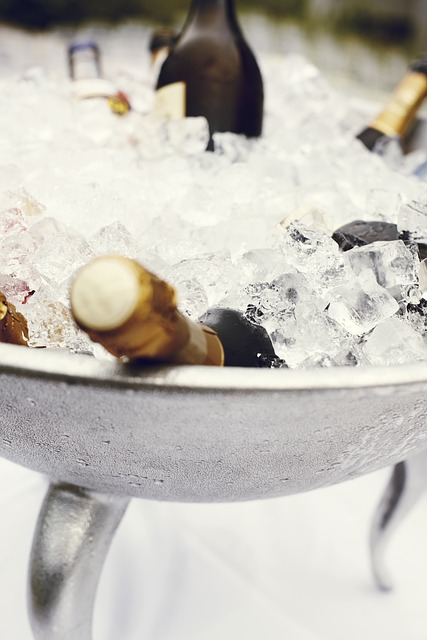
Chilling Champagne is a must.
- Chill the bottles in your fridge at least 3 hours before planning to open. The wine must be chilled but not super cold!
- If you are short on time, get a bucket of ice and let the bottle chill for 20 minutes, that's long enough.
- Never put a bottle in the freezer. Why? You may forget it, and it will be a disaster. I confess I do it once in a while, but no longer than 20 minutes!
Choose the glasses
A recent article in Serious Eats claimed that the best glass was a wine glass, not a flute.
I like the flute because I always like to watch the bubbles forming and flowing to the top of the glass. A regular wine glass works well too. Coupes have a wide opening that lets the gas dissipate quickly in the air, the wine getting flat quickly.
Count one bottle of bubbly to serve six people.
How to open a bottle?
It can be a struggle. The wine is under 6 bar of pressure, so opening a bottle requires some attention.
- Remove the foil, then the wire.
- Grab the cork in one hand firmly and turn the bottle. I find it easier to turn the cork.
- If stuck, use a towel to get more grip. If stuck, use a plier. A nutcracker works well.
- Have your glasses close by as the wine may escape if you have shaken a bit the bottle beforehand.
While we all love the sound of a Champagne cork popping out the bottle, sommeliers trained to handle the opening with no or minimum noise.
Check out this video for a demonstration.
How to pour?
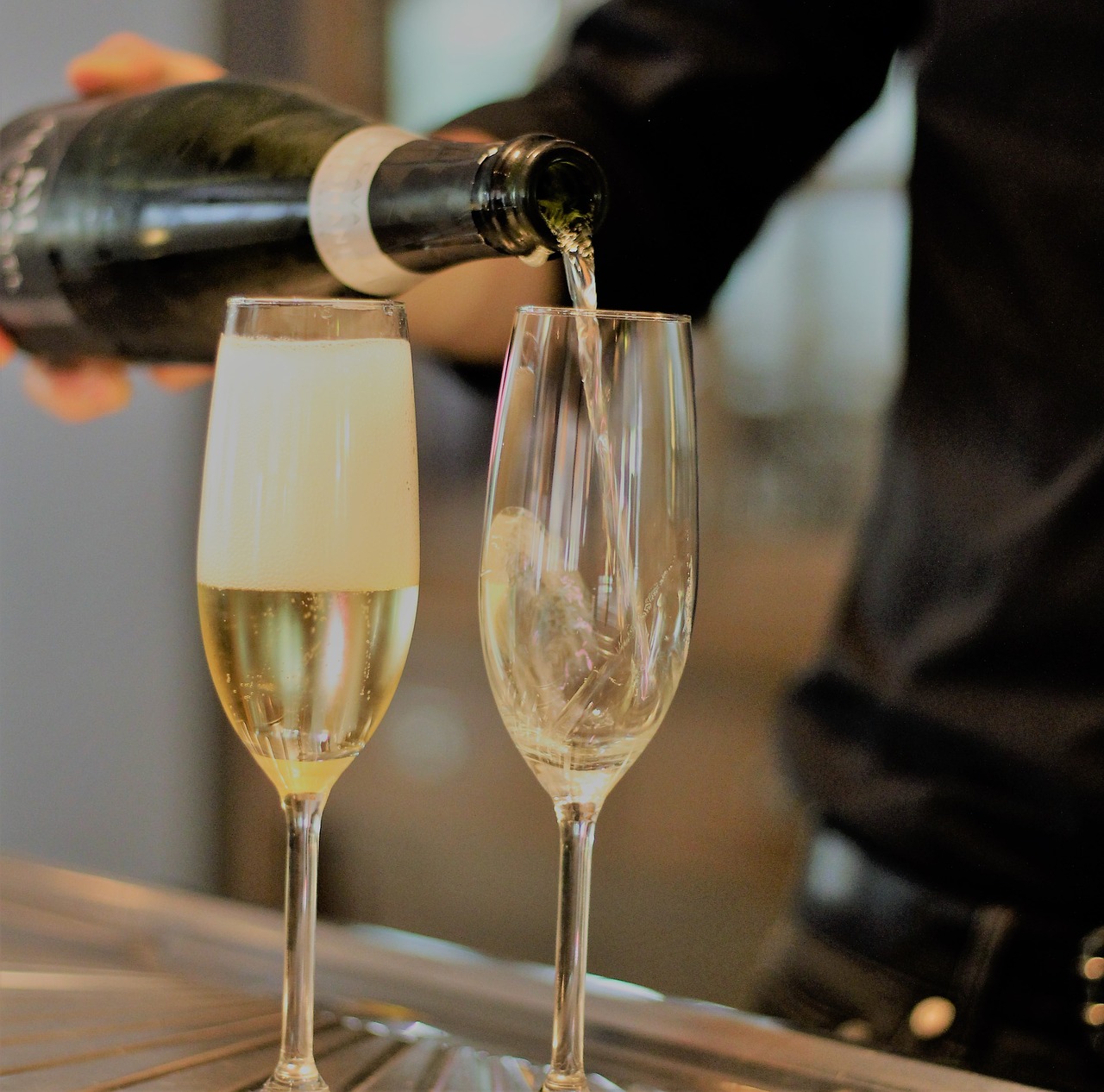
Pour slowly into the glass so that the effervescence from the mousse slowly and the wine does not overflow.
Cheer with your guests!
Preserve the mousse
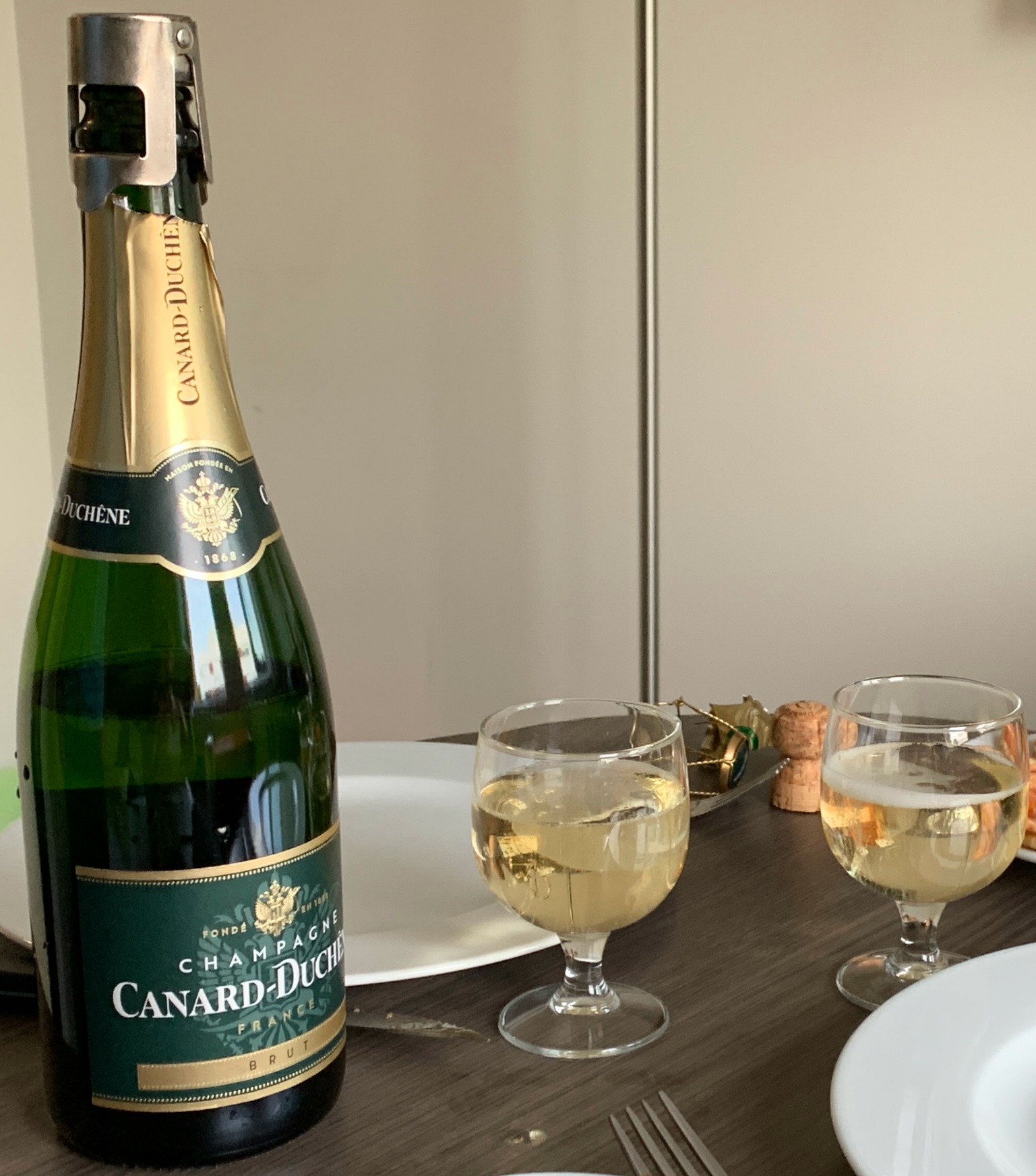
Use a stopper to keep the wine in the fridge or the ice bucket.
There was a saying that dropping a silver spoon into the bottle opening would keep the effervescence. One of my sensory professors gave this assignment to a student: to compare the wine effervescence perceived in the mouth after a sparkling wine was closed with a stopper or a spoon. The experiment showed that the spoon didn't do the job!
Sparkling wine tasting

Champagne and sparkling wines get unique aromas from the secondary yeast fermentation in the bottle and aging on the lees. These notes are captured in the Sparkling wine aroma wheel.
Young sparkling wines with minimum aging on lees have fruity aromas (such as green apple, watermelon, or pear). In contrast, sparkling wines aged on lees for an extended period of time develop unique and complex aromas, such as creamy, caramelized, nutty, or spicy.
My Champagne lifestyle has a few rituals
To the last drop
One of my family rituals is to serve the wine until the last drop. After emptying the bottle into a glass, my dad would lay the bottle on the table for a few minutes. Then, he would pour the last drops. We are still doing this at home.
My go-to bubblies for different occasions
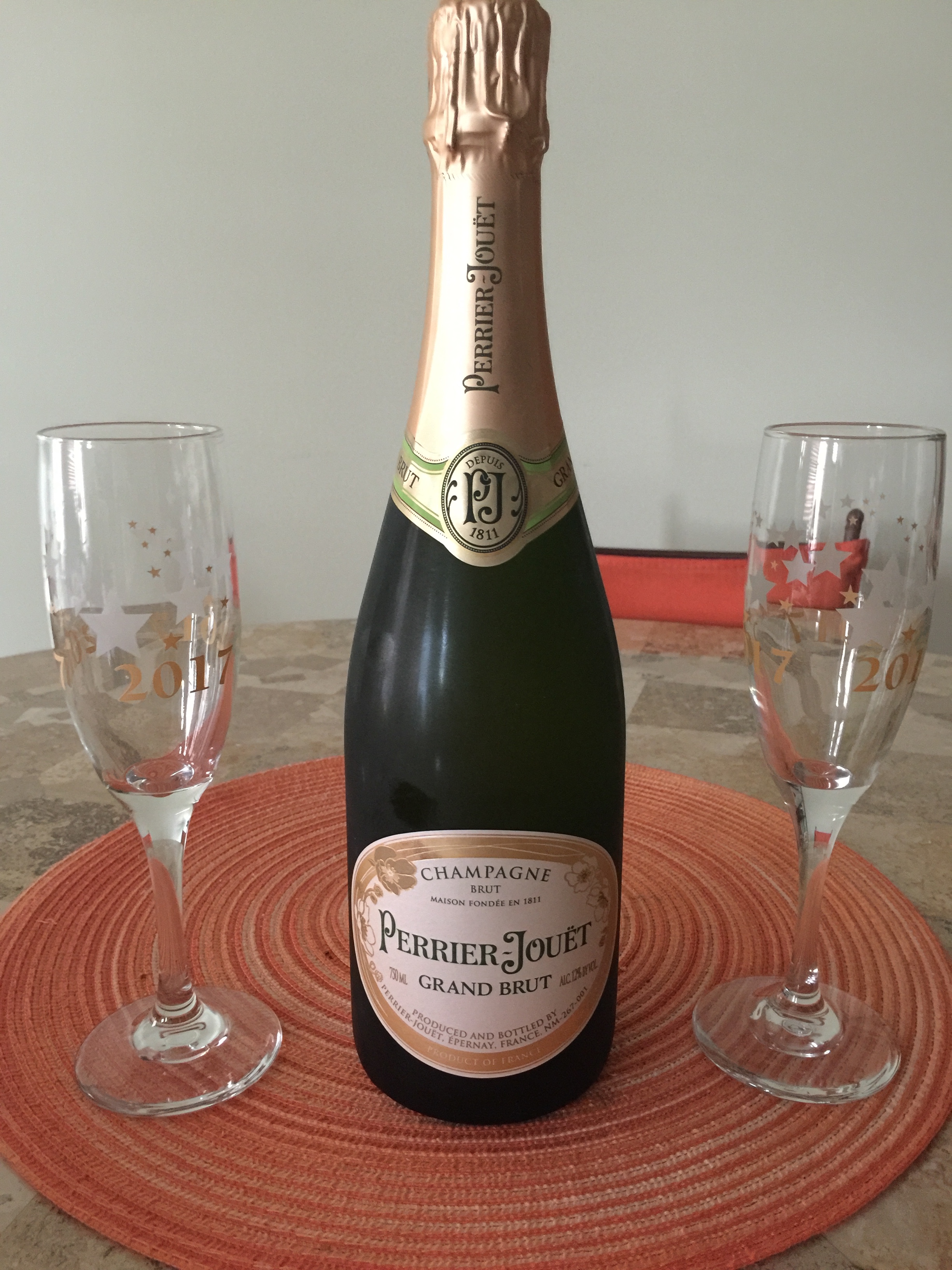
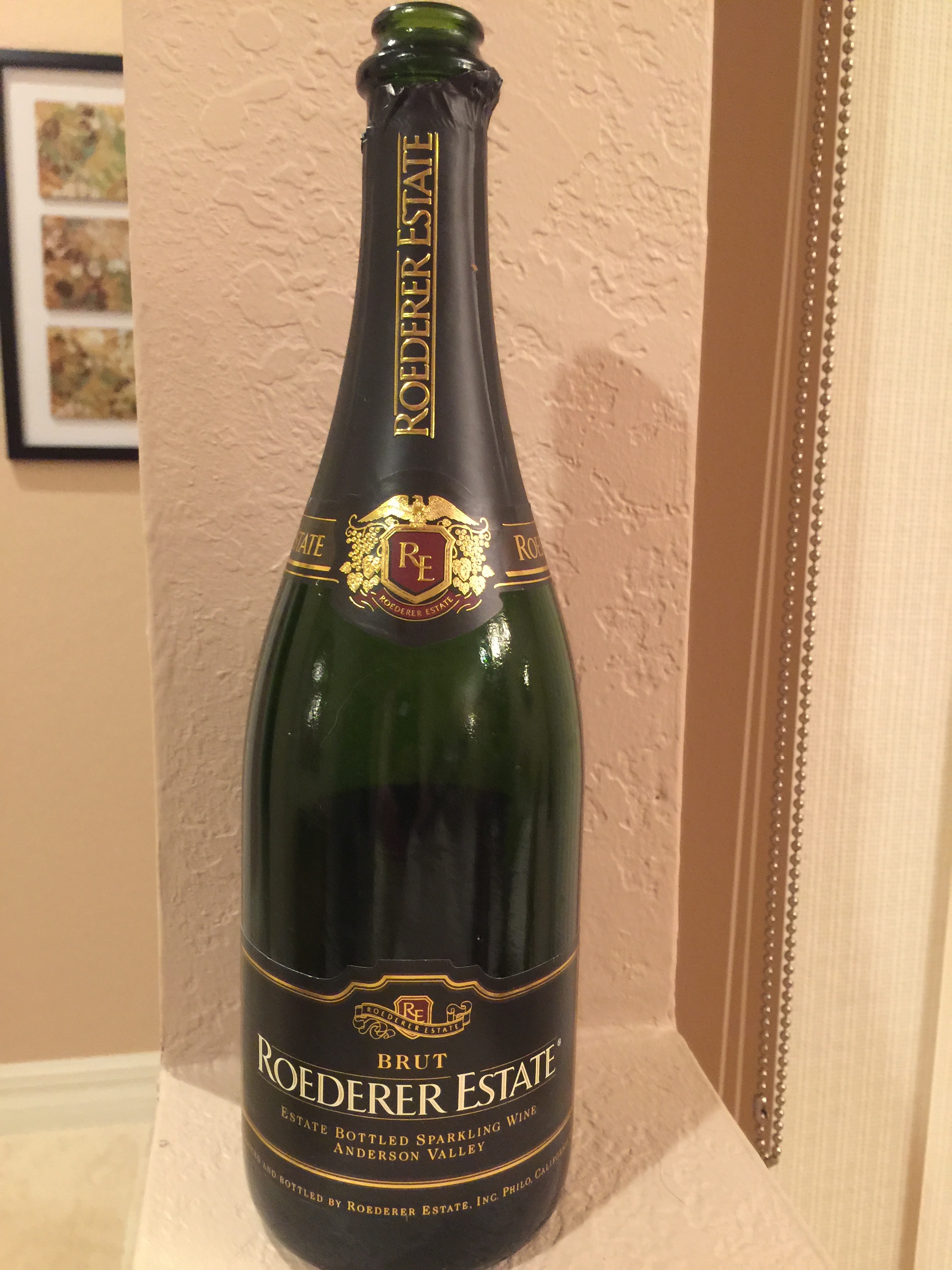
For casual occasions:
- Penelope Brut (California, Naked wines)
- Mumm sparkling wine (California)
For a special day:
- Kirkland Champagne found at Costco.
- Roederer Estate sparkling wine (California)
For a special celebration, I go back to my roots.
- Mumm Cordon rouge (France)
- Perrier Jouet Brut (France)
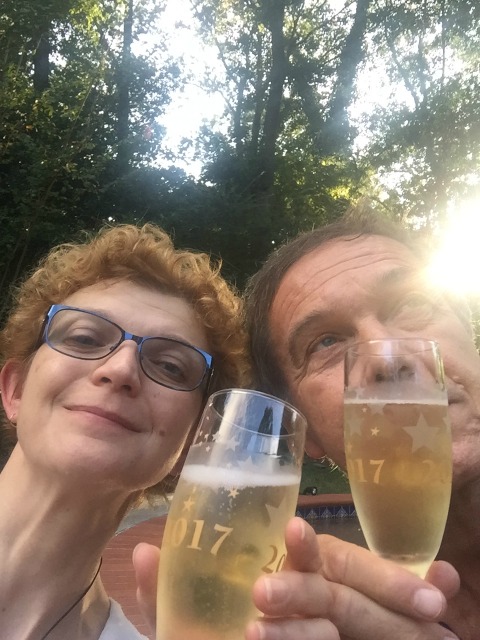
You may not indulge in a Champagne lifestyle over the Holidays.
Whatever your wine choice, drink with moderation, and enjoy!
Cheers!
Published December 18, 2019



